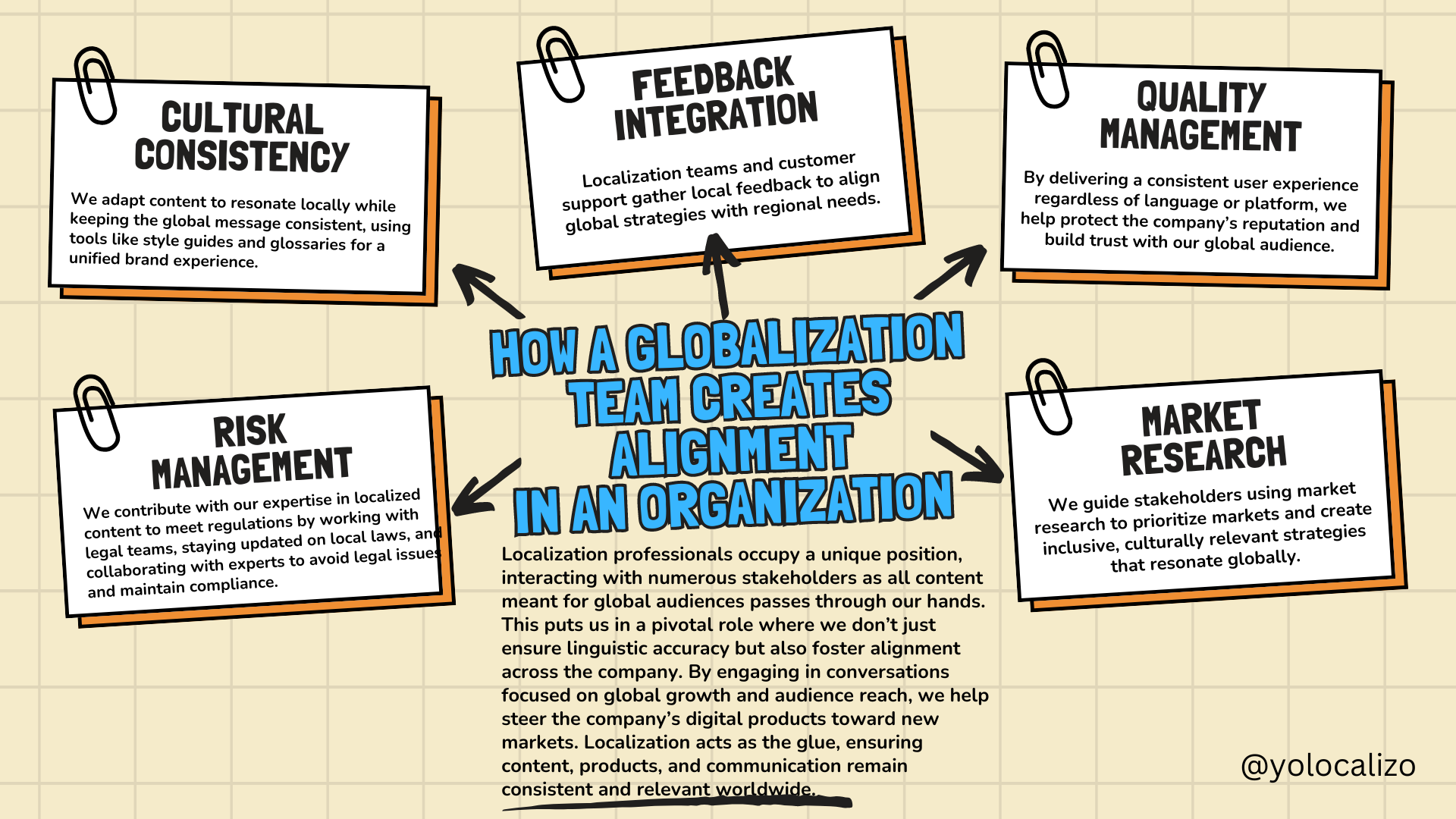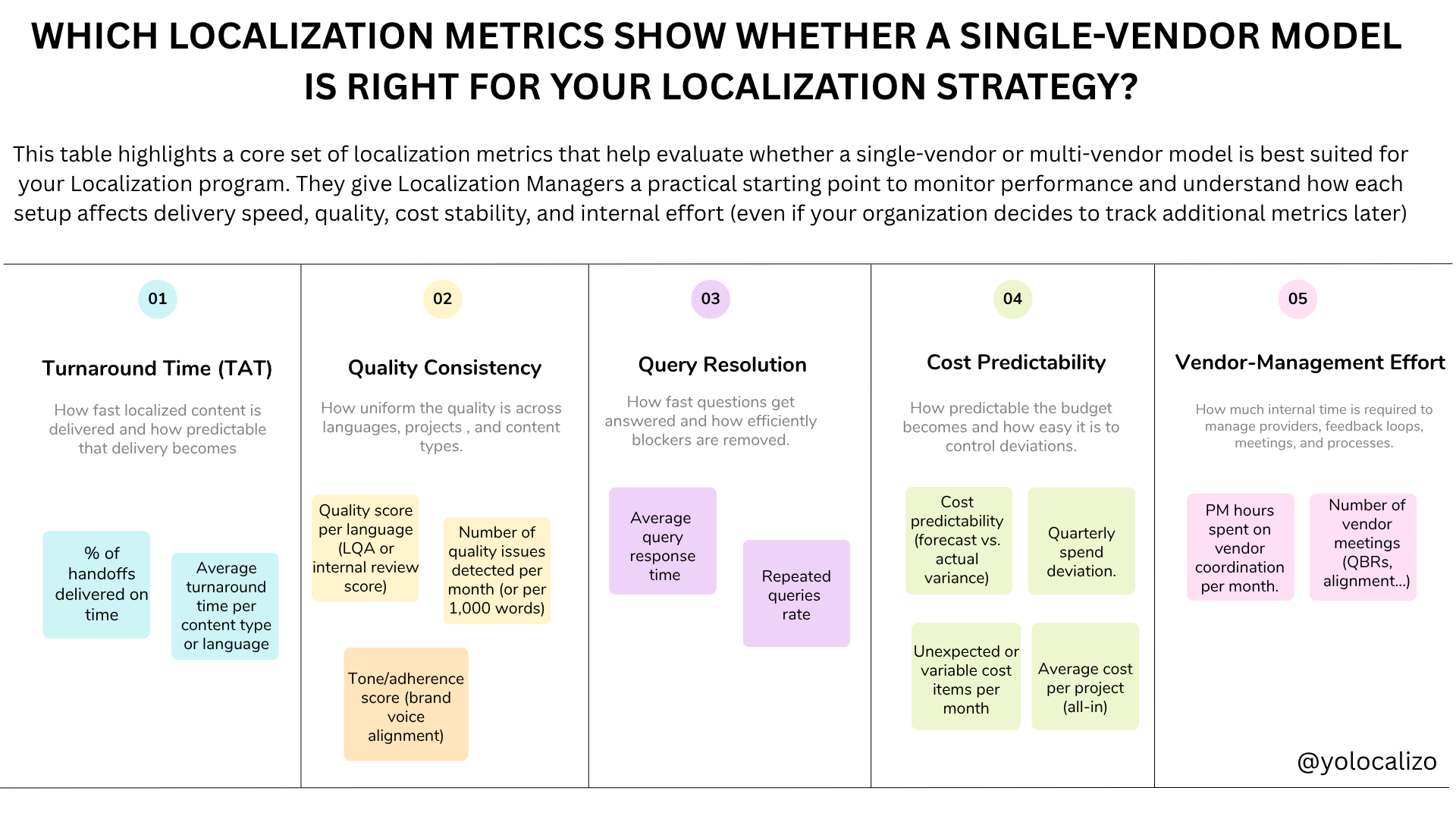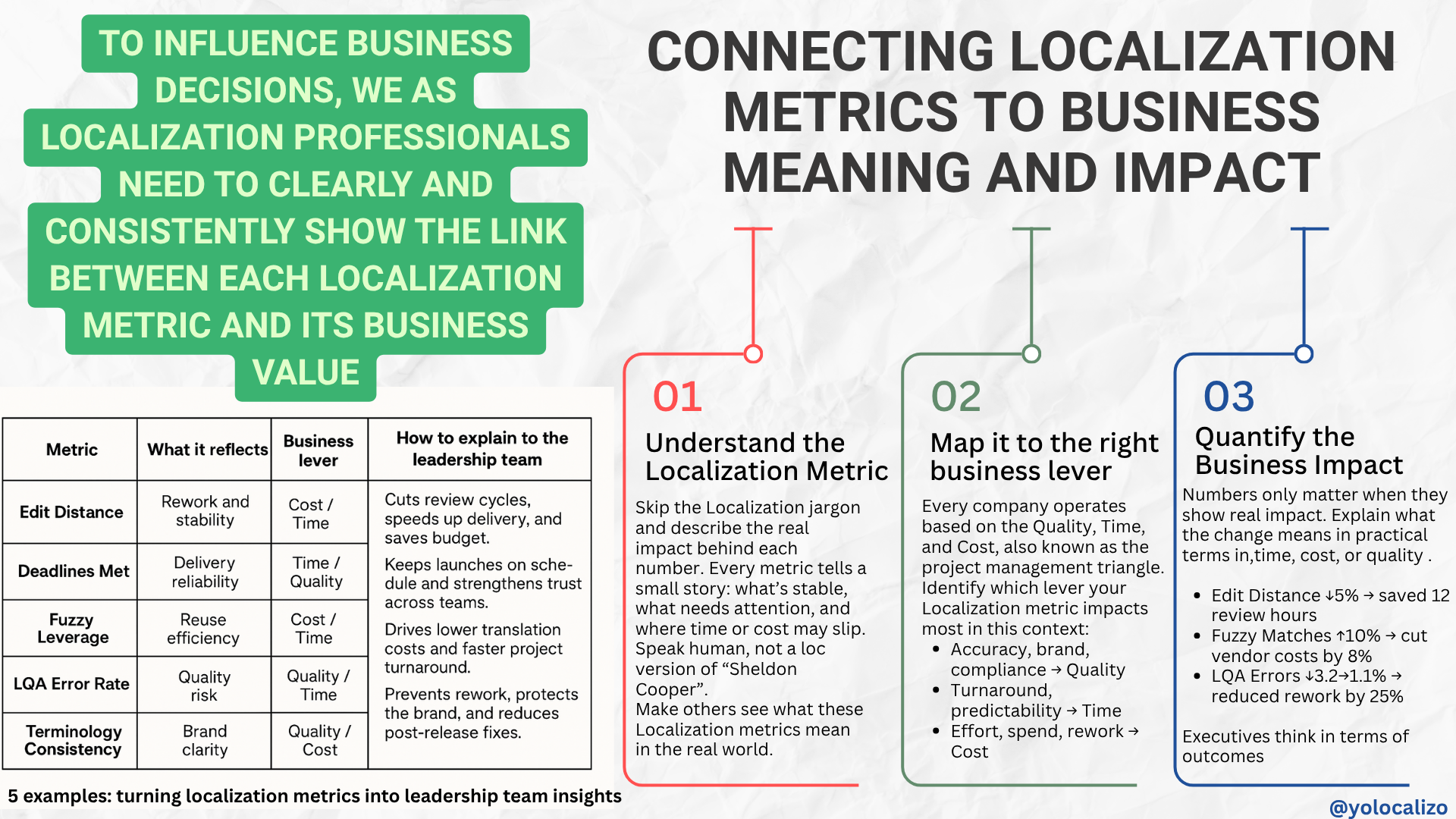Localization as part of Global Business Strategy –Decoding the air C-level Executives breath
One of the situations that have always cost me the most to explain in a clear and direct way to members of a senior management leadership team is the benefits that a Localization team with a good Globalization strategy brings to the results of a company...
Deep down, now that I think about it ... I think one of the main reasons why this blog was born a couple of years ago was to give clarity to my ideas.
Writing makes me think and forces me to edit, to simplify.
And the truth is that ... I always get lost in the details!
I've been in the Localization industry all my life. I live and breathe translation! But a VP, CMO, CTO ... no ... They breathe an air very different from mine. So my ability to understand the air they breathe and adapt to their environment is the only possibility I have to explain why Localization should be part of the company's Global Business Strategy.
Let's be honest, apart from a few geeks who work on this, there are not many people interested in knowing that pseudo-localization is an important phase during internationalization; and that this can help us to have fewer truncated texts, fewer texts with corrupted characters, fewer problems with the layout of a pop-up ...
In a presentation to a Senior Manager if I explain that Internationalization is the process through which products can be prepared to be taken to other countries. They probably do not understand it very well (or they might not mind at all!) If I continue in my explanation with details about the fact that it means being able to accept different forms of data, they will be starting to get nervous and impatient. And if I continue to go into detail explaining that separating keys with text from graphics will help to have fewer bugs in the product related to hard-coded text ... probably at this point, their patience has run out ...
We will have lost our chance ...
In recent years I think I have improved my ability to get to the point, but I do not have success recipe about how to convince a Senior Management team to prioritize the localization budget at the same level as other functions of the company.
No, I'm not a Jedi that waving my hand in front of a VP face will do what I want ... that would be an interesting power to have, without a doubt ... but (at the moment) I have not developed this ability. What I have developed based on making bad presentations and bad speeches to C-level people is a focus on what not to do ... and from there, learn what I have to do ... below I share a series of tips to explain how we can present Localization to get the attention of Executives ... Because a Globalization / Localization team does much more than Translation ......
- Get to the point
presentation on localization strategies does not have to focus on being educational or inspiring. The focus when we present to a senior management team does not have to be to educate. The focus is to make a presentation that serves as a "raw decision making". It is important to give a presentation with data so that our stakeholders can make an informed decision. Explain what internationalization is ... hmmm, not a great idea. Report the economic impact of a bug related to internationalization ... well, now we are talking! Suddenly we have our stakeholders looking at us instead of their mobile phones.
Let's be honest, what happens in a mobile phone of a C-level executive is more interesting than my talk about fuzzy matches in TM, glossaries management and hard-coded text in graphics...
But if I follow the AID model to the get to the point (Action, Impact, Desirable outcome) now we are starting to breathe the C-level executive air, not my geek Translation air.
Action: Look for a metric to quantify the economic impact of internationalization on product development software. The cost of a bug can be identified, we just need to look and estimate all the different re-do tasks that we need to execute for not following best I18N practices. Prevention better than inspection will help to show a dashboard to a Senior Manager explaining the cost of poor Globalization strategies
2. No storytelling
This one is conflicting with the advice I get from my fellow colleagues at Toastmasters International. In the world of Toastmasters and in the world of public speaking, in general, there is much emphasis on storytelling as a means of engaging the audience. And in general, storytelling works great to connect with the audience and explain what Localization is. When in a presentation I talk about the stew I was eating with my father on May 3, 1995, in Madrid when I received a phone call with my first offer to join an LSP, I feel that the people in the audience are listening to me. They are curious to know what happened on that call, what my father said, what I told him ... storytelling at a certain level works ... but when we meet with a senior management team we have to leave storytelling aside. In these situations, I have to throw out everything I learned in Toastmasters or presentation training about Storytelling. These executives did not come into the room to listen to a five-minute story from eating "stew with my father". They came to make a decision and they leave because they have a very tight agenda.
Action: No storytelling, fewer words and more metrics to help them to make a decision What metrics should we provide? Well, depending on your business and where Localization is giving support. But in this wonderful Webinar from Moravia, we have food for thoughts to create metrics that "our" executive will pay more attention than to our storytelling
3. Craft a powerful generic message, a powerful tagline for the value of early Globalization mindset.
To be truly effective, localization and internationalization should be considered as early as possible in the process. However, often this Globalization mindset is misaligned with the strategy of the company. Convincing management of the importance of localization should not be an afterthought; Once a product or service has already been developed for one market. It is much more effective to start localization activities asap. How can we craft a generic message? There are 2 vital points on which we can focus here.
Action: Brand image reputation & Growth Happens Away from the Nest.
Too many companies have negatively impacted their product's or service's brand image by entering a market without a full understanding of the audience or the local market issues. There are a few examples of this. Check out this article or this article or this article. As they say, we only have one opportunity to create a good impression. We have to build a solid business case for the importance of including Globalization / Localization teams in these global launches... because as it says "Growth Happens Away from the Nest"
A Localization team is often thought of as a cost center when in reality it is a profit enabler. Localization is a great way to grab additional revenue internationally. Check out this articlefor more background info. A good localization strategy will give us an advantage over competitors.
4. Customize win-win situation per C level "role"
A CMO takes care of it, let me greatly simplify its role here, that the customers are happy, that they like the product they are using, that the reviews are good and that all this makes the monetization go up as much as the value of Salah, the talented Egyptian player of Liverpool, is rising during this edition of the Champions League.
To get CMO attention we have to explain that users prefer to use a product in their mother tongue and present a dashboard with data to support this statement.
We have to explain that low quality in the UI will not add happy customers. And if we plan to enter international markets such as Japan with a low-quality product we have the same chances of succeeding there that the chances of Donald Trump and Kim Jong to sign a collaboration agreement to end global pollution while having a friendly chat with a cup of tea.
We have to communicate to a CMO about how Localization can help customers to provide happy customers with a native experience.
Now ... if the C-level executive with whom we meet is the CSO, here the thermometer of the happy client that we have used to gain the support of the CMO we have to leave it aside. We have to talk to a CSO about benefits and how to enter new markets. So when we get together with the CSO let's prepare an arsenal of metrics related to how Localization helps grow the profits of a company
If we get through our KPIs to show the CSO a clear relation of Globalization strategy = more international revenue we will have achieved our objective of the meeting.
Action: study metrics to get the interest of the CSO.
Source:Multilingual issue April / May 2015
Unfortunately, we are still far from having Globalization and Localization teams involved consistently in the strategy of a company (see below graphic)
however maybe with these 4 points, I mentioned we might be closer to engage our execs. Localization industry is engaging and interesting ... we just need to find a way to get to the point and create an environment with similar air that executives live and breath ... that will be crucial to have a seat at the table in C- level planning and strategy meetings.
Do you have any advice that worked for you while talking to Executives about Globalization/Localization? If so, please leave your comment below, the more advices we can get to enter in the C-level mindset the better 🙂
Have a great week!
@yolocalizo



















This feels like a pivotal moment. Localization teams are being asked to support more markets, move faster, use AI responsibly, and show impact, not just output. Expectations are higher than ever, but many teams are still trained mainly for execution. We are strong at delivering localization work, yet we often struggle to move from output to outcome and to clearly explain the impact of what we do.